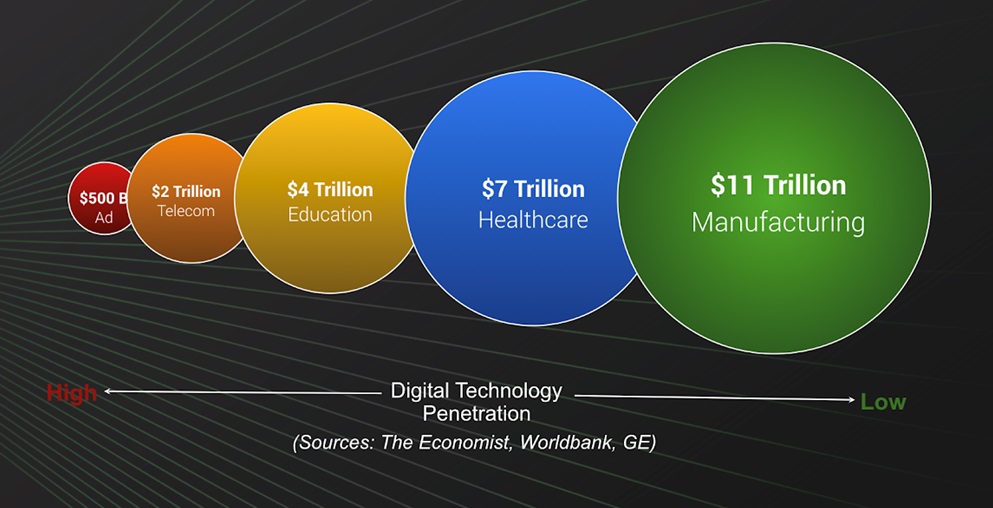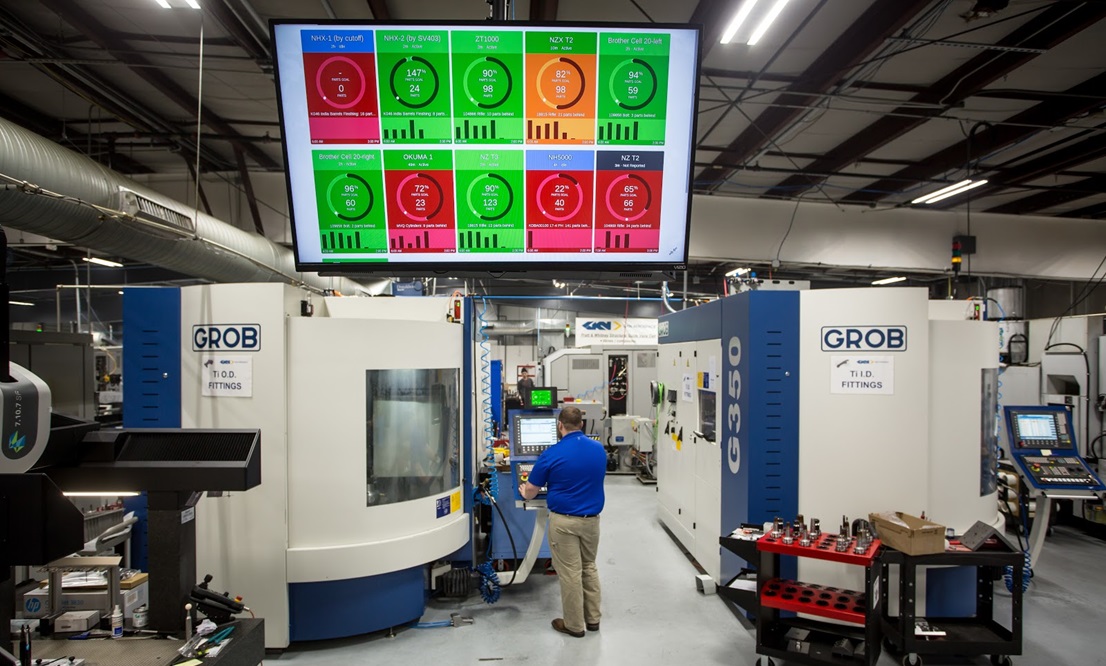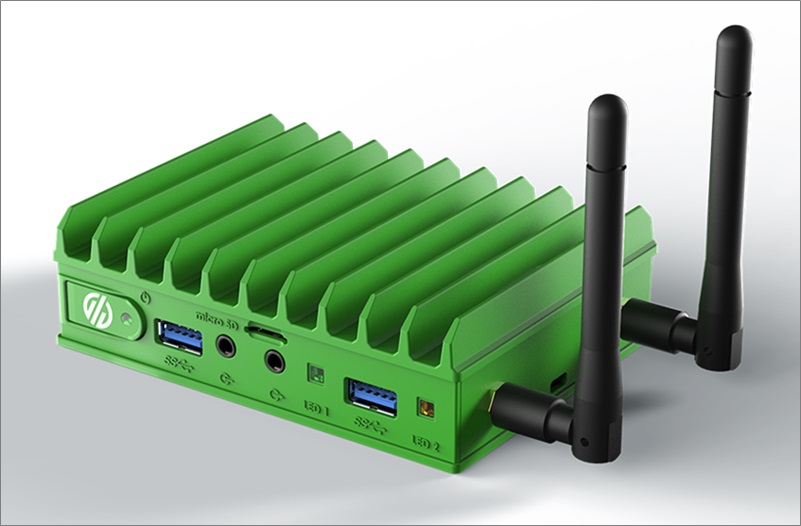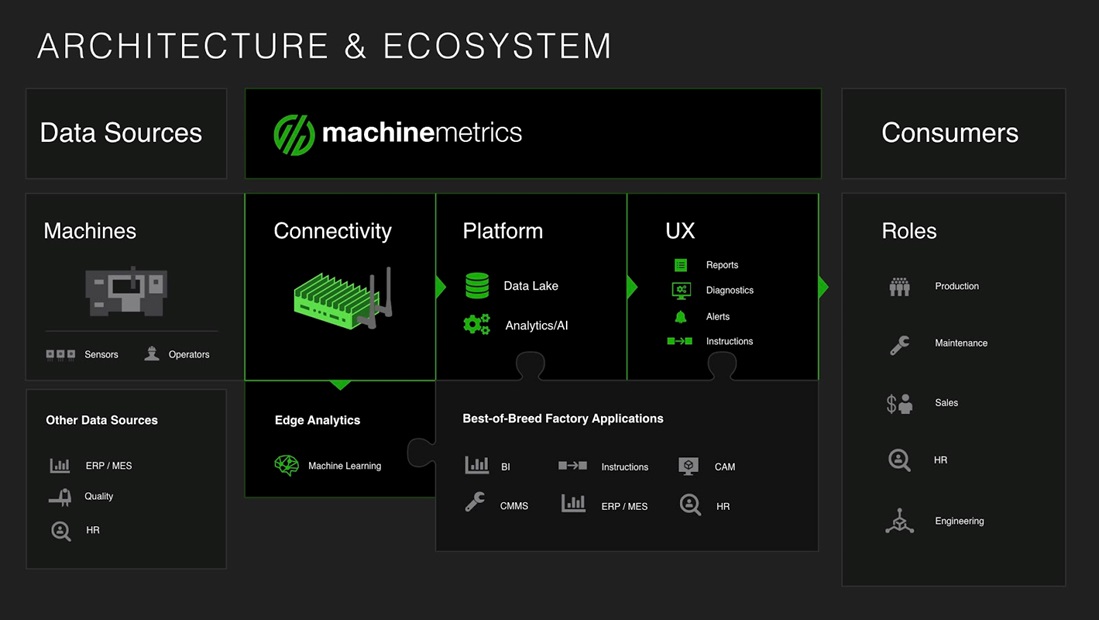AWS Partner Network (APN) Blog
Reinventing the Internet of Things (IoT) Platform for Discrete Manufacturers
By David Westrom, VP of Business Development at MachineMetrics
By Graham Immerman, Director of Marketing at MachineMetrics
 |
 |
 |
The Industrial Internet of Things (IoT) space is hot right now, as manufacturing represents perhaps the largest greenfield opportunity left for digitization. Yet, IoT platform implementations have historically had a high rate of failure within this vertical.
What’s contributing to these failure rates, and what needs to change?
In this post, we examine common approaches for enabling Industrial IoT initiatives, the pros and cons, and their culpability for the high failure rate. We then introduce a new approach that’s already driving rapid, continuous value creation for discrete manufacturers and the companies that provide and service their manufacturing assets.
First, a bit about us—MachineMetrics is manufacturing’s first Industrial IoT platform designed for discrete manufacturing. We like to think of ourselves as the machine data component of the Amazon Web Services (AWS) digital factory.
MachineMetrics, an AWS Partner Network (APN) Advanced Technology Partner with the AWS Industrial Software Competency, has developed a hybrid solution for manufacturers and machine builders that combines machine connectivity and rapid value creation of packaged software-as-a-service (SaaS) applications with the innovation enablement of an IoT platform.
Right now, hundreds of manufacturers and machine builders are using the MachineMetrics platform to measure and analyze the performance of thousands of machines across global factories.
Our solutions are providing these companies the necessary real-time data they need to optimize machine performance and productivity, increase capacity utilization, and ultimately win more business to remain globally competitive.
The IoT Platform “Revolution”
The term Industry 4.0 encompasses a promise of a new industrial revolution—for the industrial sector, one that marries advanced manufacturing techniques with the Internet of Things to create systems that are not only interconnected, but communicate, analyze, and use information to drive further intelligent action back in the physical world.
Today is the internet moment for manufacturing, and with it comes the gold rush of providers ready to enable the industry’s digital transformation.
At this point, it would be impossible to work within the manufacturing space and not have spent the past few years bombarded by pitches for Industrial IoT platforms claiming to best support the Industry 4.0 revolution.
Figure 1 – Despite manufacturing being the largest industry in the U.S. and producing perhaps the most raw data, it has the least amount of digitization of any major industry.
These magical platforms market their unique machine learning (ML), artificial intelligence (AI), and edge/cloud/fog technologies to enable the fabled digital transformation of any industry through predictive models, digital twins, and fully-automated workflows.
There are more than 450 IoT platforms to choose from, according to IoT Analytics, and it can be easy to think Industry 4.0 has indeed arrived and manufacturing’s digital transformation is finally at hand. The data, however, tells another story.
IoT implementations have had a historically high rate of failure. Cisco produced a report of survey results indicating that companies considered 76 percent of their Industrial IoT initiatives failures. This has led to greater hesitation on the part of manufacturers to embark on digital transformation journeys.
So what’s driving companies to fail at such a high rate when a majority said that IoT initiatives looked good on paper?
We explore some of the organizational causes in our eBook Why Industrial IoT Projects Fail. In this post, however, we focus on the story’s technology component and IoT platforms specifically, with the goal of both identifying and proposing a solution to manufacturing’s platform problem.
The Platform Problem
There are many different types of IoT platforms, including application enablement platforms, device management platforms, analytics platforms, and others.
In July 2019, Gartner published its first-ever 2018 Magic Quadrant for Industrial IoT, which included companies that provide IoT platforms that work in multiple verticals. No company crossed Gartner’s bar for execution, however, and no one made it above the midway horizontal line (indicating a strong ability to execute). This demonstrates that successful execution and value attainment is elusive.
The challenge with a platform is that it can be time-consuming and expensive to implement and deploy. The investment required to be trained on the platform, and model and build the initial applications and solutions that generate value for the customer, can be prohibitive.
When evaluating return on investment (ROI), use cases and not the underlying platforms ultimately drive value. Since most generic IoT platforms can’t deliver packaged manufacturing use cases in the form of services, applications, or solutions by themselves, the onus of enabling a use case using an IoT platform falls on the customer or systems integrator.
Many manufacturing transformation leaders have struggled with determining a tangible and acceptable ROI from their IoT platform investments. More often than not, their projects go over budget, deployment times run long, interoperability issues occur across legacy systems, or planning and resources aren’t allocated appropriately. This all leads to a disappointing ROI, or even cancellation of the initiative.
The Discrete Manufacturing Challenge
Manufacturing has several unique challenges that are difficult to address with generic IoT platforms.
Data Variety
Not only are there many distinct types of equipment—Lathes, Mills, Plastic Injection Molding, Stamping, Laser Cutters, Robotics—but depending on the mechanisms available for acquiring data from those systems, the data points can be diverse. To provide effective tools for analyzing that data across distinct systems, the data must be transformed into a common data model.
Data Volume
Manufacturing equipment, and discrete manufacturing equipment in particular, is very complex. A machine is a large system of components that work in coordination, resulting in hundreds of distinct data points that change constantly.
Depending on the application, there may be situations where it’s required to capture data at rates of 100Hz or 100KHz. Platforms consuming this must analyze data at multiple levels within the system to avoid sending and storing unnecessary data, when only the aggregate or computed result is sufficient.
These systems must be capable of performing complex processing where it’s most appropriate—at both the edge and in the cloud.
Data Speed
While some systems can provide value with low fidelity and high latency, certain IoT use cases require much more real-time data to be effective. Edge technology is required to process high volumes of data, make decisions in milliseconds or less, and act to potentially prevent damage to the machine or the work piece.
Number of Disparate Systems
Integrating legacy systems is a complex task. Having robust data models for each application serving the vertical are required to adequately capture events. Furthermore, having a deep understanding of how the data from each of those systems interact within manufacturing is also necessary to be able to make correlations and provide coherent analysis for process improvement.
IT Infrastructure
Highly elastic and scalable systems are a new entrant to manufacturers and their IT organizations. Due to the intense processing and storage requirements of IoT, it can be prohibitively costly to overprovision a system for peak load at all times.
Utilizing secure cloud systems with virtual hardware architectures programmed to be highly available, scalable, and fault tolerant with multiple data centers separated geographically for disaster recovery are even more important when considering the value that a successful IoT initiative can bring an organization.
Investing in Industrial IoT Platforms
Discrete manufacturers invest in IoT platforms to answer four basic questions:
- What’s happening?
- Why is it happening?
- What’s going to happen next?
- What can I do about it?
To properly answer these questions and deliver business value, one needs to understand their data within the context of their own operations. This requires a singular focus on the vertical in order to realize the immediate and continuous value promised when undertaking an Industry 4.0 digital transformation initiative.
Figure 2 – We often talk to companies who have predictive and preventative aspirations, but who don’t know what’s happening right now on their shop floor. By providing this visibility, our customers experience a 20 percent increase in uptime in the first month on average.
With the complexity introduced by these challenges, it should be no surprise that generic IoT platforms often fall short when it comes to manufacturing.
Limitations of On-Premises Packaged Applications
Currently, manufacturers have options to embrace data-driven manufacturing other than IoT platforms. Instead of building out applications and solutions that meet specific needs using a platform, manufacturers often opt to buy a packaged application or solution, or hire a third-party to build a solution for them leveraging various platforms, tools, and technologies.
These packaged applications and solutions have proliferated the market for decades, and the primary benefit is time to value. They can be set up quickly at a relatively lower cost and rapidly drive incremental value.
One disadvantage of packaged applications and solutions is the customer must adapt their processes to conform to the software. Packaged applications and solutions can also be difficult to customize, extend, and integrate with the many disparate systems that exist in a manufacturing facility.
The customization of packaged applications and solutions, along with customized integrations to other disparate applications and systems across the manufacturing enterprise, can create a maintenance nightmare and has resulted in a state of paralysis at many global manufacturers.
These issues are a few of many that have led to the opportunity we see today in the market for something better.
A New Approach: Jump Starting the Platform
Until recently, the options for enabling IoT initiatives and driving digital transformation for discrete manufacturers were limited to the horizontal platform approach, the integration of a packaged application or solution, or some combination of each through a myriad of disparate product and service vendors.
But what if you could have your cake and eat it, too? What if you could have the continuous improvement and innovation opportunity provided by a platform with the immediate benefit and ROI of a packaged service, application, or solution?
Today, we present to you our methodology behind why we built MachineMetrics and lay out a new approach to solving manufacturing’s platform problem. This approach has driven tremendous value to the tune of 20 percent increases in manufacturing efficiency on average for our customers within the first month.
The Industrial IoT Foundation
Enabling any Industry 4.0 initiative starts with a data infrastructure that facilitates rapid connection to any type of asset. Regardless of brand or age, it is necessary to capture and transform data into a standard format that is stored in a secure manner in a cloud infrastructure that can easily be consumed by any technology.
This is not a simple task, though. We first simplified IoT connectivity with an inexpensive edge device that enables secure Ethernet, Wi-Fi, and cellular communication while connecting directly to machine tool PLCs and controls. This device is programmed with dozens of custom software adapters developed to automatically unlock, map out, collect, and standardize the available data points (Status, Modes, Alarms, Overrides, Load, Speeds, Feeds, and more).
We then add the ability to connect additional sensors or collect data from legacy equipment with digital and analog I/O that is configured and managed remotely through a web interface. This task is paramount as every manufacturer has a wide variety of equipment types and ages that require data to be unsiloed from in order to drive analytics.
Figure 3 – MachineMetrics Edge runs numerous custom software adapters that connect, collect, and transform, and push machine data to their Amazon VPC platform via Wi-Fi, Ethernet, or cellular connectivity.
Our data collection infrastructure is the foundation of the MachineMetrics IIoT Platform. Once collected and transformed, the data can be made actionable through vertically focused applications delivered either by MachineMetrics, through third parties, or with custom applications built by customers using available APIs.
Adding Vertically Packaged Applications
In order to offer quick time to value, vertically focused applications that provide actionable information for specific user personas is necessary. The foundation itself provides the data, but the value is in making the data actionable.
There are many opportunities to deliver packaged applications that make manufacturing data actionable for a variety of consumers within the manufacturing lifecycle. Here are a few examples we’ve developed to ensure our users are able to create rapid value.
Built-in capacity utilization reporting allows plant managers to make capital equipment purchase decisions. Knowing how your factory’s machine utilization compares with the industry average can either drive the decision to purchase more equipment or new equipment, as well as whether to invest in internal operations to optimize the utilization of existing equipment.
A tablet application mounted at the machine empowers operators to add human context to machine data and to meet production goals.
Through text and email notifications delivered to their mobile phones, the app enables operators to respond to problems faster and more efficiently with instructions that display when a machine needs attention, such as an inspection, a tool change, or maintenance. The app also tracks changeovers and setups so that when the process exceeds the expected time, the supervisor is called over to proactively manage the issue.
For OEMs and distributors of manufacturing equipment, a packaged application enables remote monitoring and diagnosis of machine health problems assets in the field and at customer sites in real-time.
With the application, service technicians can remotely visualize machine diagnostics and conditions to quickly identify problems, allowing them to either help troubleshoot and resolve the problem without the on-site visit or, if they need to go to the plant, bring the right tools and order the right parts in advance of a plant trip. The result is better service and improved machine uptime for the customer, but also a reduction of costly on-site service visits.
Platform Extensibility
The challenge with vertically packaged applications is that there are more use cases that drive rapid value creation with manufacturing data than any one company can build and support alone. Thus, robust APIs that allow third parties to extend the platform and build their own vertically packaged applications that allow even more value creation opportunities to be driven with the data.
This requires more investment of time and risk, but the payoff can be large. The MachineMetrics Platform is extensible at multiple levels, including at the edge, via API access to data in the cloud, and through our operator interface. This enables manufacturing customers and partners to leverage their deep domain expertise to add their own unique IP to the platform and optimize the value created for our mutual data consumers.
For example, machine builders have unique domain expertise with regards to the design and operation of their own machines. This gives them a natural advantage when it comes to the optimization of these complex and highly specialized assets. The challenge, however, is to deliver a solution to enable machine builders to leverage this expertise.
It’s tremendously difficult to seamlessly deploy an application across a fleet of machines, not to mention to maintain this solution over time. For the customer who has many different assets, the challenge is to leverage as few apps as possible to monitor, analyze, and manage the proper notifications for their various equipment types.
Figure 4 – Many companies leverage MachineMetrics as a true Industrial IoT platform; others leverage the technology as the machine data component of a much larger digital factory initiative.
Leveraging MachineMetrics, machine builders can now provide advanced analytics and custom micro-services to their customers through our scalable, vertically integrated cloud platform. For example, machine builders can offer algorithms customized for their own equipment that deliver predictive health notifications of spindle life. This has created a competitive differentiation for our machine builder partners, and an opportunity to drive incremental growth through new services and business models.
The ultimate end customer, the discrete manufacturer, along with their consulting partners, also possess unique insight and expertise with regards to their manufacturing operations, processes, and products.
This domain knowledge can be leveraged by the manufacturer to extend the MachineMetrics Platform to drive continuous operational improvement. One example is monitoring SPC of part cycles where outliers can be configured as a trigger to indicate a problem cycle or a bad part.
Integrations with Existing Third-Party Applications
There is an ecosystem being developed of modern, cloud SaaS manufacturing applications. These are designed to easily integrate with other SaaS applications through APIs. For manufacturers who use these applications, integrations and time to value is shortened.
Industrial IoT data can drive value across this ecosystem with integrations into ERP/MES, BI, Quality, HR, and CMMS/Maintenance. As this ecosystem evolves with more vertically focused applications in the market, the time to value and need for customization is greatly reduced.
This provides the manufacturer a complete solution across the entire manufacturing stack that is vertically integrated for your business, flexible for changes in business process, and easily updated and maintained through cloud deployments.
Legacy ERP/MRP systems that try to tackle every problem do not support integrations, require very expensive customization and configuration, and prevents changes to business process.
Conclusion
At MachineMetrics, our mission has always been to provide manufacturers with the data they need to increase productivity, win more business, and stay competitive. In the age of Industry 4.0, discrete manufacturing’s digital transformation requires a new approach that creates confidence and inspires future innovation.
Our approach provides the necessary rapid value creation for implementations to break free of the standard “pilot purgatory,” as C-level executives have been able to achieve ROI numbers that justify larger roll-out plans, while shop floor workers are simultaneously experiencing the benefits of real time visibility and automation.
The initial success of an implementation is so important, not just to demonstrate the value of the initial technology but to realize the belief in the benefits enabled through Industrial IoT technology.
This is, of course, not the end of the digital transformation story; it’s just the beginning. As users gain confidence in the value of the technology, it’s essential to provide customers a roadmap to continuous innovation enablement. We call this roadmap the manufacturing analytics journey.
Only by incorporating this approach can IoT platforms deliver real business impact for discrete manufacturing. Without it, most of them will continue struggling to deliver on the promise of Industry 4.0.
The content and opinions in this blog are those of the third party author and AWS is not responsible for the content or accuracy of this post.
.
AWS Competency Partners: The Next Smart
MachineMetrics is an AWS Competency Partner, and if you want to be successful in today’s complex IT environment and remain that way tomorrow and into the future, teaming up with an AWS Competency Partner is The Next Smart.
 |
MachineMetrics – APN Partner Spotlight
MachineMetrics is an AWS Competency Partner whose Industrial IoT platform measures and analyzes the performance of thousands of machines across global factories.
Contact MachineMetrics | Solution Overview
*Already worked with MachineMetrics? Rate this Partner
*To review an APN Partner, you must be an AWS customer that has worked with them directly on a project.




